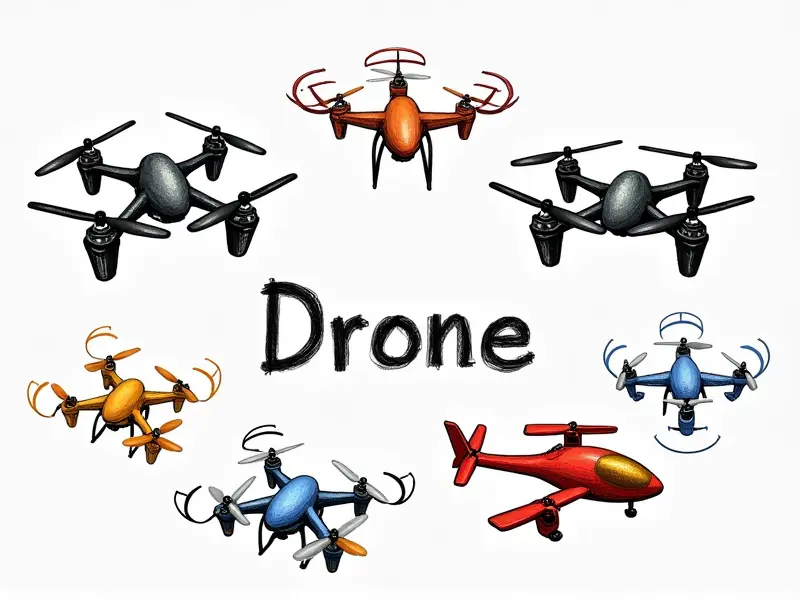What's the best propeller size?

The choice of propeller size is a critical factor in determining the performance and efficiency of your RC model. Whether you're flying quadcopters, FPV racing drones, helicopters, or airplanes, selecting the right propeller diameter can significantly impact speed, agility, lift capacity, and overall flight stability.
Best Prop Size for RC Quadcopters
For RC quadcopters, choosing the correct prop size is essential to balance power and efficiency. A larger propeller will provide more thrust but may require a stronger motor to avoid stalling. Smaller props offer better maneuverability at lower speeds.
Selecting Propellers for Quadcopter Performance
- Prop Diameter: Opt for 5045 or 5050 propellers for most quadcopters to achieve optimal lift and stability.
- Motor Power: Ensure your motor can handle the load of larger props without overheating.
Optimal Props for FPV Racing Drones
FPV racing drones require a propeller that maximizes speed and agility while maintaining control. Smaller diameter props are often preferred due to their ability to deliver high RPMs and quick response times.
Picking the Right Prop Size for Speed
- Prop Diameter: 45mm or 50mm props work well for FPV racing, offering a balance between speed and maneuverability.
- Motor Specifications: Choose motors with high KV ratings to match the prop size and achieve maximum RPMs.
Ideal Propellers for RC Helicopters
RC helicopters require careful selection of prop sizes to ensure proper lift, stability, and control. The right propeller will depend on the type of helicopter (tail rotor or collective pitch) and its intended use.
Selecting Props for Helicopter Performance
- Tail Rotor Prop: Tail rotors typically require smaller props to maintain stability without excessive torque.
- Main Blade: Larger main blades provide better lift but demand more power from the engine. Choose wisely based on your helicopter's specifications.
Perfect Prop Sizes for RC Airplanes
The propeller size for RC airplanes is crucial for achieving optimal flight characteristics such as speed, climb rate, and stability. The choice depends heavily on the airplane’s design and intended use (glider, aerobatic, or sport).
Airplane Prop Selection Tips
- Prop Diameter: Larger props are suitable for heavier planes requiring more lift, while smaller props work well for lighter models.
- Motor Compatibility: Ensure the motor can provide sufficient power to drive your chosen prop size efficiently.
Choosing the Right Propeller Diameter
The diameter of a propeller greatly influences its performance. A larger diameter means more thrust but also requires more torque from the motor, while smaller props offer better maneuverability and quicker response times.
Determining Optimal Prop Size
- Motor Power: Consider your motor's power output to determine if it can handle larger prop sizes effectively.
- Aircraft Weight: Heavier models will typically require larger props for adequate lift and stability.
Max Performance with Correct Prop Size
Selecting the right propeller size is key to achieving maximum performance in your RC model. Proper sizing ensures efficient power utilization, optimal speed, and enhanced flight characteristics.
Enhancing Flight Characteristics
- Lift Capacity: Larger props provide better lift for heavier models.
- Speed and Agility: Smaller props offer quick response times and high-speed capabilities.
Propeller Guide: Size Matters
The propeller guide is your go-to resource for understanding how prop size affects the performance of your RC model. Proper sizing ensures you get the most out of your aircraft's potential.
Making Informed Choices
- Research: Understand the specific requirements of your model and motor capabilities.
- Trial and Error: Experiment with different prop sizes to find the optimal configuration for your setup.
Best Props for Speed and Agility
The best propellers for speed and agility are those that offer a balance between high RPMs and quick response times. Smaller diameter props typically excel in these areas, making them ideal for FPV racing drones and fast RC airplanes.
Picking the Fastest Props
- Prop Diameter: Opt for 45mm or smaller props to maximize speed.
- Motor KV Rating: High KV motors paired with small props deliver rapid acceleration and high speeds.
Finding Your Drone's Sweet Spot
The sweet spot is the optimal propeller size that maximizes your drone’s performance in terms of speed, agility, lift capacity, and stability. Experimenting with different sizes will help you discover this ideal configuration.
Experimentation Tips
- Trial Runs: Test various prop sizes under controlled conditions to observe their effects on flight characteristics.
- Data Logging: Record your findings and analyze the results to identify patterns and optimal configurations.
Top Prop Choices for FPV Racing
The best prop choices for FPV racing drones are those that provide a balance between speed, maneuverability, and control. Smaller diameter props are often preferred due to their ability to deliver high RPMs and quick response times.
Picking the Best Props for FPV Racing
- Prop Diameter: 45mm or smaller props offer excellent speed and agility for racing drones.
- Motor Compatibility: Ensure your motor can handle the high RPMs generated by small props efficiently.
Ultimate Prop Selection for FPV Racing
The ultimate prop selection for FPV racing involves finding a balance between speed, agility, and control. Proper sizing ensures optimal performance in competitive settings where quick reflexes and high speeds are crucial.
Finding the Perfect Configuration
- Motor Power: Consider your motor's power output to determine if it can drive small props efficiently.
- Aircraft Design: Tailor prop size choices based on your drone’s aerodynamic design and intended use.
Conclusion
Selecting the right propeller size is crucial for maximizing the performance of your RC model. Proper sizing ensures efficient power utilization, optimal speed, and enhanced flight characteristics tailored to your specific needs.
Final Tips
- Research: Understand the requirements of your aircraft and motor capabilities thoroughly.
- Trial Runs: Experiment with different prop sizes to find the optimal configuration for your setup.
By following these guidelines, you can make informed choices that enhance the performance and enjoyment of your RC model.

